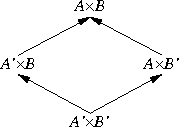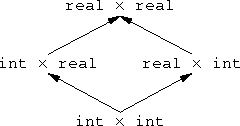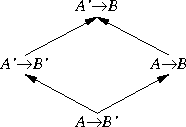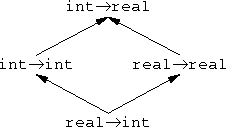Mark Dominus (陶敏修)
mjd@pobox.com

Archive:
| 2025: | JFMAMJ |
| JAS | |
| 2024: | JFMAMJ |
| JASOND | |
| 2023: | JFMAMJ |
| JASOND | |
| 2022: | JFMAMJ |
| JASOND | |
| 2021: | JFMAMJ |
| JASOND | |
| 2020: | JFMAMJ |
| JASOND | |
| 2019: | JFMAMJ |
| JASOND | |
| 2018: | JFMAMJ |
| JASOND | |
| 2017: | JFMAMJ |
| JASOND | |
| 2016: | JFMAMJ |
| JASOND | |
| 2015: | JFMAMJ |
| JASOND | |
| 2014: | JFMAMJ |
| JASOND | |
| 2013: | JFMAMJ |
| JASOND | |
| 2012: | JFMAMJ |
| JASOND | |
| 2011: | JFMAMJ |
| JASOND | |
| 2010: | JFMAMJ |
| JASOND | |
| 2009: | JFMAMJ |
| JASOND | |
| 2008: | JFMAMJ |
| JASOND | |
| 2007: | JFMAMJ |
| JASOND | |
| 2006: | JFMAMJ |
| JASOND | |
| 2005: | OND |
Subtopics:
| Mathematics | 245 |
| Programming | 99 |
| Language | 95 |
| Miscellaneous | 75 |
| Book | 50 |
| Tech | 49 |
| Etymology | 35 |
| Haskell | 33 |
| Oops | 30 |
| Unix | 27 |
| Cosmic Call | 25 |
| Math SE | 25 |
| Law | 22 |
| Physics | 21 |
| Perl | 17 |
| Biology | 16 |
| Brain | 15 |
| Calendar | 15 |
| Food | 15 |
Comments disabled
Thu, 06 Jul 2006
Contravariant types
I just had a slightly frustrating discussion with some colleagues,
involving a small matter of object-oriented design. I don't want to
get into the details of the problem here, except to say that it
involved a class A and its derived class B; I was
asking for advice about the design of a "demote" method that would
take a B object and turn it into an A object.
The frustrating part was that about half of the people in the conversation were confused by my use of the word "demotion" and about whether A was inheriting from B or vice versa. I had intended for B to inherit from A. The demotion, as I said, takes a B object and gives you back an equivalent but stripped-down A object.
To me, this makes perfect sense, logically and terminologically. Demotion implies movement downward. Downward is toward the base class; that's why it's the "base" class. A is the base class here, so the demotion operation takes a B and gives you back an A.
Or, to make the issue clearer with an example, suppose that the two classes are Soldier and General. Which inherits from the other? Obviously, General inherits from Soldier, and not vice-versa. Soldiers support methods for marching, sleeping, and eating. Generals inherit all these methods, and support additional methods for ordering attacks and for convening courts martial. What does a demotion method do? It turns a General into a Soldier. It turns an object of the derived class into an object of the base class.
So how could people get this mixed up? I'm not sure, but I think one possibility is that they were thinking of subclasses and superclasses. The demotion method takes an object in the subclass and returns an object in the superclass. The terminology here is backwards. There are lots and lots of people, me included, who never use the terms "subclass" and "superclass", for precisely this reason. Even if my colleagues weren't thinking of these terms, they were probably thinking of the conventional class inheritance diagram, in which the base class, contrary to its name, is at the top of the diagram, with the derived classes hanging under it. The demotion operation, in this picture, pushes an object upwards, toward the base class.
The problem with "subclass" and "superclass" runs deeper. Mathematical terminology for sets is well-established and intuitive: A is a "subset" of B if set A is entirely contained in set B, if every element of A is an element of B. For example, the set of generals is a subset of the set of soldiers. The converse relation is that B is a superset of A: the set of soldiers is a superset of the set of generals. We expect from the names that a subset will be a smaller set than its superset, and so it is. There are fewer generals than soldiers.
Now let's consider programming language types. A type can be considered to be just a set of values. For example, the int type is the set of all integer values. The real type is the set of all real number values. Since every integer is also a real number, we might say that the int type is a subset of the real type. In fact, the word we usually use is that int is a subtype of real. But "subtype" means no more and no less than "subset".
Now let's consider the types General and Soldier of all objects of classes General and Soldier respectively. Clearly, General is a subtype of Soldier, since every General is a Soldier. This matches the OOP terminology also: General is a subclass of Soldier.
The confusing thing for data types, I think, is that there are two ways in which a type can be a "subtype" of another. A could be a smaller set than B, in which case we use the words "subtype" and "subclass", in accordance with mathematical convention. But A could also support a smaller set of operations than B; in OOP-world we would say that A is a base class and B a derived class. But then B is a subclass of A, which runs counter to the terminological implication that A is at the "base".
(It's tempting to add a long digression here about how computer scientists always draw their trees with the root at the top and the leaves at the bottom, and then talk about how many nodes are under the root of the tree. I will try to restrain myself.)
Anyway, this contravariance is what I really wanted to get at. If we adopt the rule of thumb that most values support few operations, and a few values support some additional operations, then the containment relation for functionality is contravariant to the containment relation for sets. Large sets, like Soldier, support few operations, such as eat and march; smaller sets support more operations, such as convene_court_martial.
The thing that struck me about this is that functions themselves are contravariant. Suppose A and B are types. Now consider the type A×B of pairs of values where the first component is an A and the second is a B. This pairing operation is covariant in A and B. By this I mean that if A' is a subtype of A, then A'×B is a subtype of A×B. Similarly, if B' is a subtype of B, then A×B' is a subtype of A×B.

|  |
Similarly, +, the type sum operation, is also covariant in both of its arguments.
But function types are different. Suppose A → B is the type of functions whose arguments have type A and whose return values are type B. Then A → B' is a subtype of A → B. Here's a simple example: Let A and B be real, and let A' and B' be int. Then every int → int—that is, every function from integers to integers—is also an example of a int → real; it can be considered as a function that takes an int and returns a real. That's because it is actually returning an int, and an int is a kind of real.
But A' → B is not a subtype of A → B. Just the opposite: A → B is a subtype of A' → B.

|  |
I remember standing on a train platform around 1992 and realizing this for the first time, that containment of function types was covariant in the second component but contravariant in the first component. I was quite surprised.
I suspect that the use of "covariant" and "contravariant" here suggests some connection with category theory, and with the notions of covariant and contravariant functors, but I don't know what the connection is.
[Other articles in category /CS] permanent link


